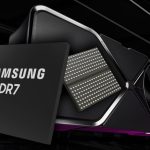The A16 Bionic is Apple’s first custom silicon mass produced on TSMC’s 4nm architecture, making it a product of cutting-edge fabrication. As such, there are some notable differences between it and the A15 Bionic, so let us get right into the details and see how both differ from one another.
A16 Bionic’s Larger Die Area Compared to the A15 Bionic May Be Due to Increased Transistor Count
The A16 Bionic’s analysis was profoundly covered by SkyJuice, though he states while there is no accurate way to determine the die area from video clips, the latest SoC is bigger than the A15 Bionic. One reason could be due to a 6 percent increased transistor count, resulting in the latest chipset being more costly to produce too. Apple’s latest silicon uses new performance and power-efficiency cores, called Everest and Sawtooth, respectively. The chipset is codenamed Crete for those who might be interested.
The performance core L2 cache on the A16 Bionic has increased by 33 percent, now at 16MB, compared to the A15 Bionic’s 12MB. Increasing cache size is a simple way of improving energy efficiency since information is now communicated with the CPU closely. The drawback here is that increasing cache size increases die size, which is evident here and increases production costs, unsurprisingly. There are also diminishing returns to cache scaling.
A surprising change in the die shot is the reduced System Level Cache (SLC) for the A16 Bionic, down from 32MB on the A15 Bionic to 24MB. Apple increased SLC size on the A15 Bionic by twice the amount compared to the A14 Bionic, but the analysis did not state why Apple would make this move, though we feel it could be cost-related. The performance and efficiency cores have different layouts on both chipsets, with Everest cores appearing slightly larger than the A15 Bionic’s Avalanche.
A16 Bionic vs A15 Bionic die shot comparison
Sawtooth’s die area has also increased, hence the increase in die size area. The one area that appears to remain consistent between the A16 Bionic and A15 Bionic are not just the total GPU cores, which are five, but their individual sizes. This is surprising to see, as Apple’s latest SoC for the iPhone 14 Pro and iPhone 14 Pro Max delivers remarkable graphics performance, with an earlier test showing a 28 percent increase compared to the A15 Bionic GPU.
The new performance and efficiency cores did not fare as well, only obtaining a 14 percent performance improvement in multi-core tests. In some areas, the A16 Bionic shares similarities with its predecessor, which may mean that the only path to see some comparable differences is when Apple’s 3nm chipsets start to arrive, which is likely next year, exclusively for the iPhone 15 Pro and iPhone 15 Pro Max.
Rumors claim that this 3nm SoC will be called the A17 Bionic, but it is possible Apple uses the same technology for the M2 Pro and M2 Max to power the updated MacBook Pro models in Q4, 2022.
The post A16 Bionic Die Shot Reveals Larger Area Compared to A15 Bionic, Increased Performance Cores L2 Cache, Same GPU Layout, More by Omar Sohail appeared first on Wccftech.







